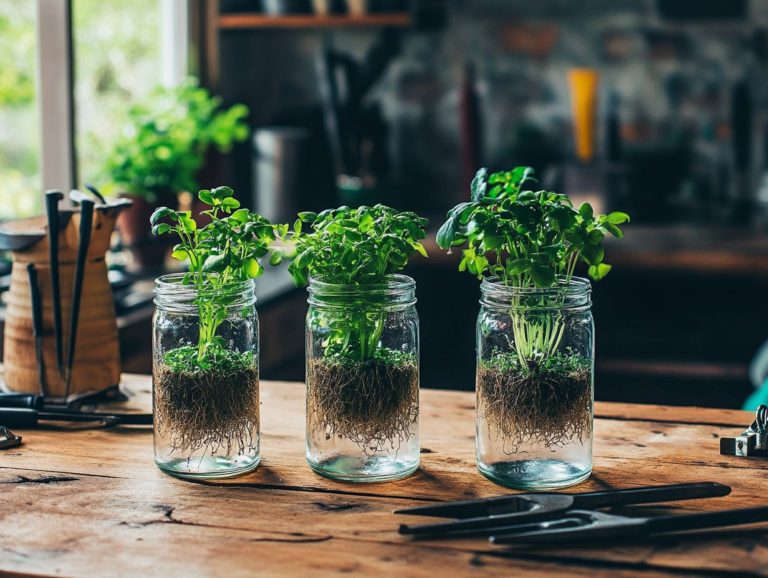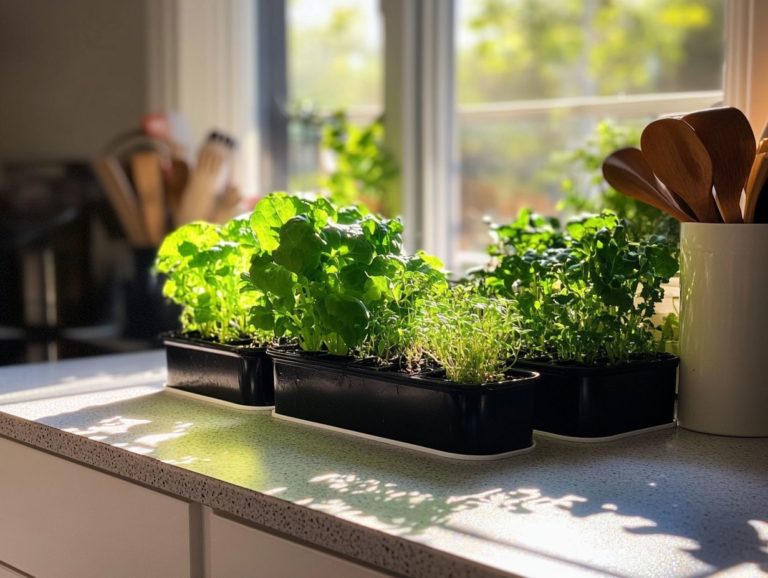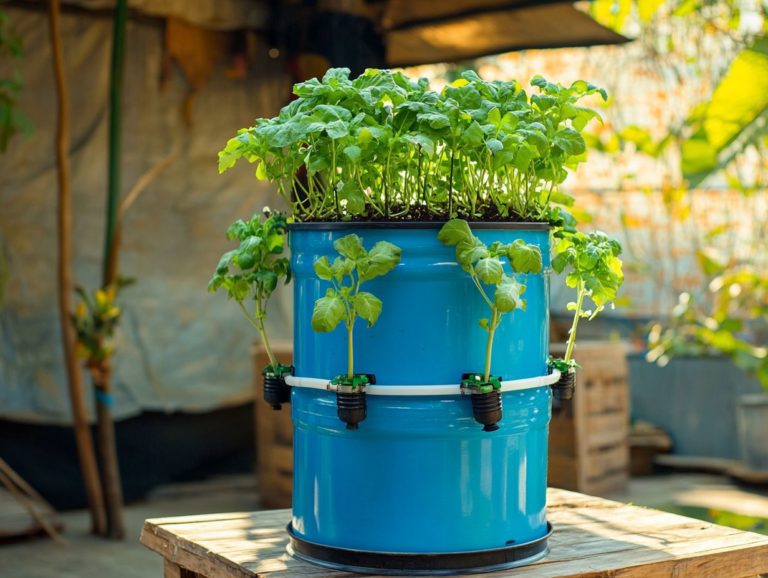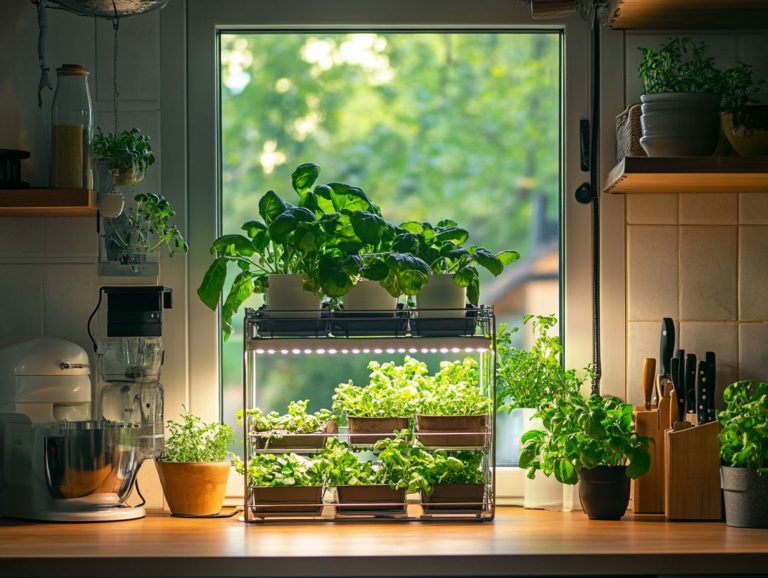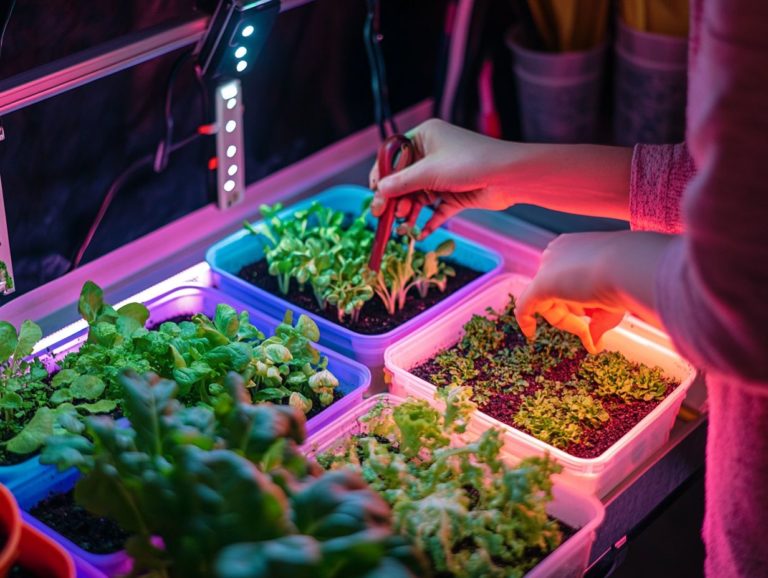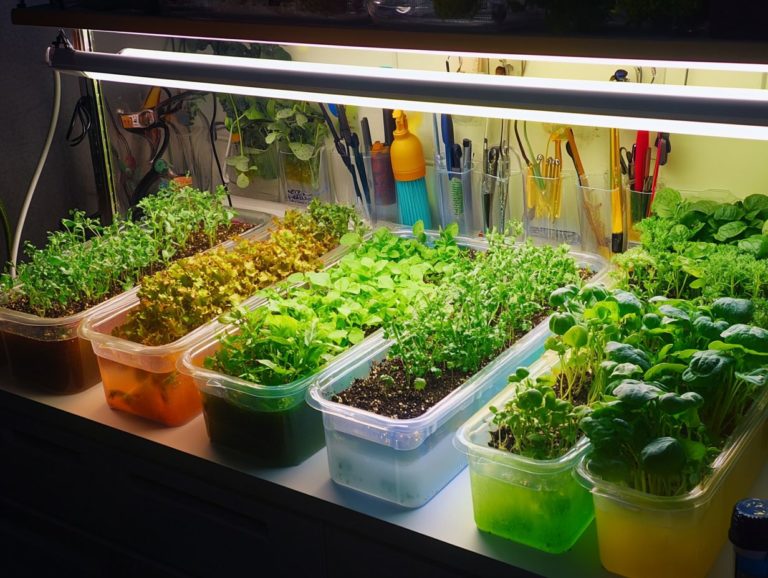How to Make a Hydroponic Wick System
Curious about growing plants without soil? A hydroponic Wick System might be exactly what you re looking for.
Discover the exciting world of hydroponics, where you can easily grow a wide variety of plants while using minimal resources. You’ll explore the many benefits of hydroponic systems and compare them to traditional gardening methods.
You will also find valuable tips on planting, maintenance, and troubleshooting. This will ensure your hydroponic garden thrives. Jump in now and see how simple it is to grow your own fresh produce!
Contents
- Key Takeaways:
- Benefits of Using a Hydroponic Wick System
- Materials and Tools Needed
- Step-by-Step Guide to Building a Hydroponic Wick System
- Planting and Maintaining Your Hydroponic Garden
- Troubleshooting Common Issues
- Frequently Asked Questions
- What materials do I need to make a hydroponic wick system?
- How do I set up a hydroponic wick system?
- What type of plants can I grow in a hydroponic wick system?
- How often do I need to water my plants in a hydroponic wick system?
- Can I use tap water for my hydroponic wick system?
- How do I maintain my hydroponic wick system?
Key Takeaways:
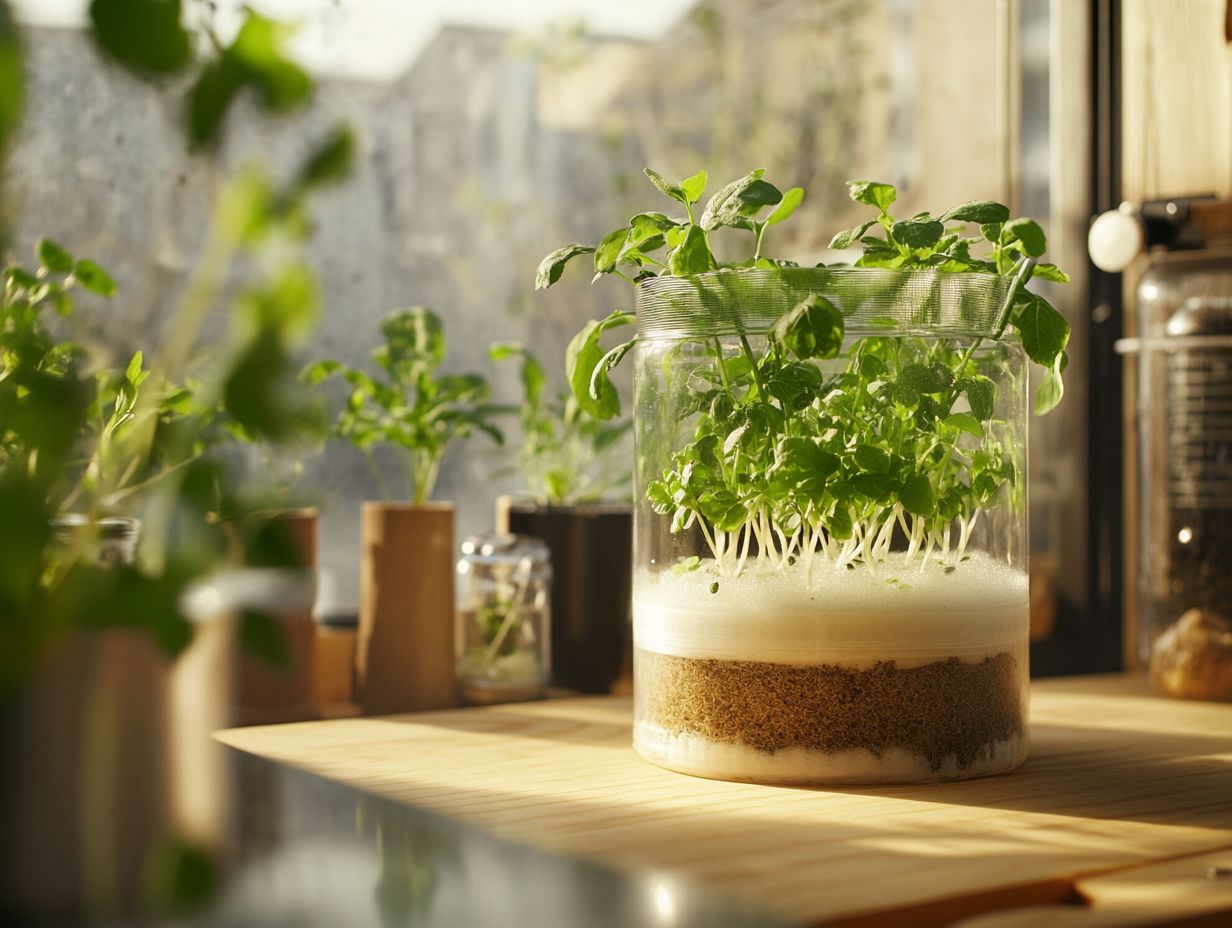
- A hydroponic wick system is a method of growing plants without soil, using a wick to deliver water and nutrients to the plant roots.
- It is space-efficient, conserves water, and reduces the risk of pests, making it great for home gardens.
- You’ll need a container, wicking material, a suitable growing medium like Hydroton or Perlite, and a balanced nutrient solution.
What is a Hydroponic Wick System?
A Hydroponic Wick System is a simple method for growing plants without soil. It nourishes plant roots directly with a nutrient solution.
This system uses the way water moves up through materials, allowing the growing medium to draw water and essential nutrients from a reservoir. It s perfect for low-maintenance gardening.
This system works well for a variety of plants, especially herbs, leafy greens, and certain fruits.
By creating a controlled environment, it ensures that your plants receive the right moisture and nutrients, making gardening easy and enjoyable.
Benefits of Using a Hydroponic Wick System
Using a Hydroponic Wick System unlocks many advantages for growing plants. This method boosts efficiency and ensures optimal nutrient delivery.
It s low-maintenance, making it suitable for both novice and seasoned gardeners. The clever design guarantees a consistent supply of nutrients, helping various plants thrive.
Advantages over Traditional Gardening
The Hydroponic Wick System has many benefits over traditional gardening. It delivers water and nutrients directly to plant roots, enhancing growth efficiency.
This method eliminates soil-borne diseases and pests, providing a consistent nutrient-rich solution. It also requires less space and water, ideal for urban gardeners.
With the option for vertical growing, you can maximize your yield in small areas. The precise nutrient delivery system promotes healthier growth and faster crop cycles.
By controlling environmental factors indoors, you can enjoy year-round plant growth, providing fresh produce no matter the climate.
Plus, hydroponic systems are water-efficient, offering an eco-friendly alternative for the environmentally conscious gardener.
Materials and Tools Needed
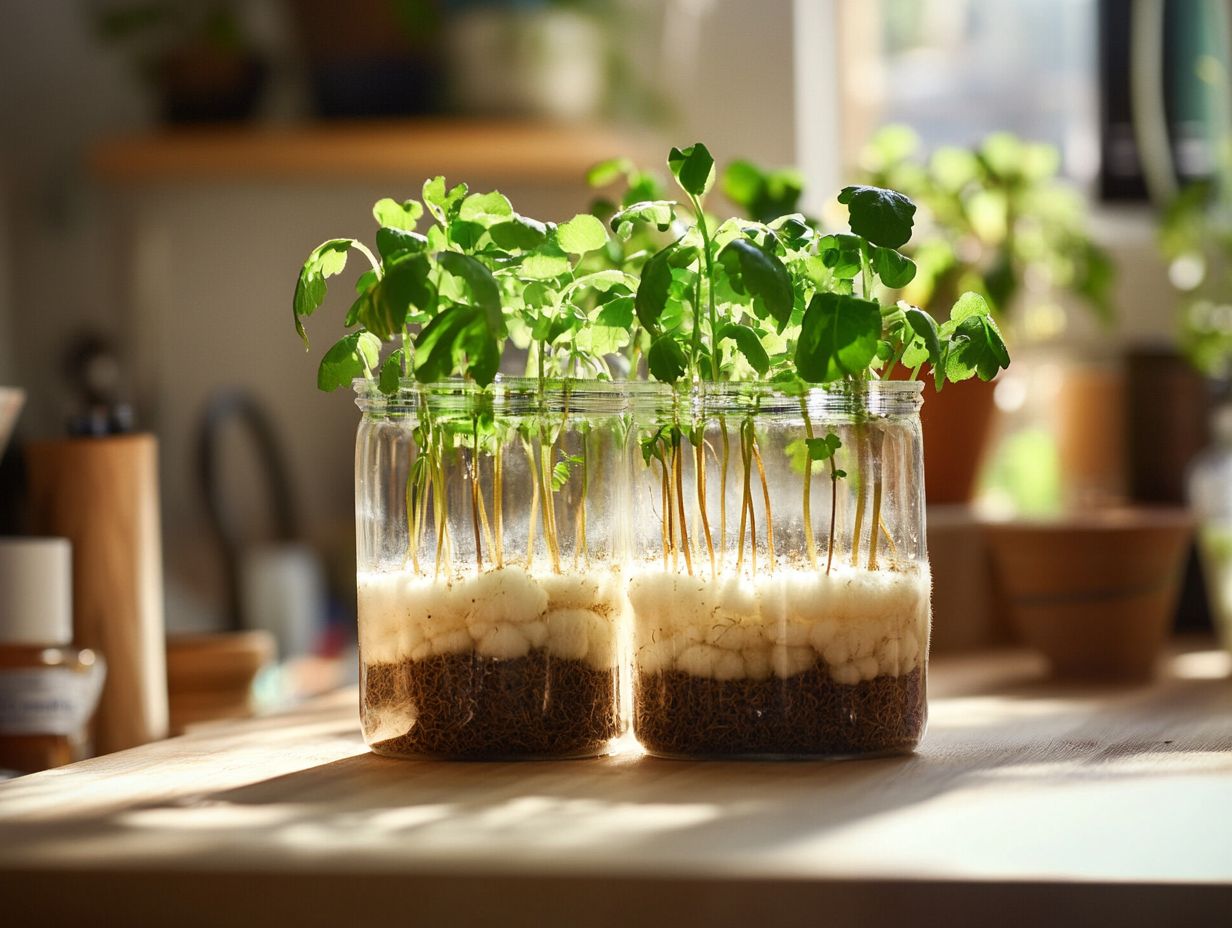
To successfully establish a Hydroponic Wick System, gather the essential materials and tools to support plant growth and system efficiency.
Begin by choosing a suitable growing medium, like Hydroton, Perlite, or Coconut Coir. Each option facilitates excellent drainage and aeration for the plant roots.
A water reservoir stores the nutrient solution, which must contain vital nutrients tailored to your specific plant species, ensuring they flourish at every growth stage.
Essential Components for Building the System
The essential components for building a Hydroponic Wick System involve several key elements that work together to establish an effective hydroponic setup aimed at fostering efficient plant growth. You ll need a durable water reservoir to hold the nutrient solution and a suitable growing medium tailored to optimize plant root health.
The wick system itself is a setup using absorbent material to move water to the plants, facilitating the movement of water and nutrients through capillary action.
By understanding the importance of each part, you can cultivate a thriving environment for various plant species to flourish.
Every element is crucial for sustaining plant growth. The water reservoir is usually constructed from strong materials like food-grade plastic or glass, ensuring it withstands the nutrient solution without degradation. The growing medium, which might include options such as Coconut Coir or Perlite, provides structural support while retaining moisture and air around the roots.
The wicks, often crafted from absorbent materials like Cotton or Nylon, draw the nutrient solution upward, guaranteeing that your plants receive a steady supply of moisture. For a deeper insight, explore understanding wick systems in hydroponic gardening. Together, these components form an interconnected system that fosters healthy growth and maximizes yields.
Step-by-Step Guide to Building a Hydroponic Wick System
Building a Hydroponic Wick System is straightforward and rewarding! Start by assembling your materials, including a suitable growing medium, a water reservoir, and the necessary components for the wick system. Each part contributes to the overall system functioning.
As you meticulously piece together the components, focus on creating a transport mechanism that positions plant roots for optimal nutrient absorption via capillary action. This attention to detail will foster vigorous growth for the plant species you choose to cultivate.
Instructions and Tips for Assembly
Follow these simple steps for the best results when assembling your Hydroponic Wick System. Start by selecting a suitable growing medium that retains moisture while allowing for proper drainage, a key factor in hydroponic gardening.
Position your water reservoir at a lower level to facilitate easy nutrient flow, essential for the efficient operation of the wick system. As you connect the wick system to the growing medium, ensure the wicks are long enough to effectively draw the nutrient solution upwards, promoting capillary action for robust plant growth. For a more advanced setup, consider learning how to set up a deep water culture system.
Evaluate the placement of your system, as proper positioning significantly influences its performance and impacts nutrient delivery efficiency. Ensure your light source provides sufficient illumination for photosynthesis without generating excess heat. Consider using reflective materials to enhance light distribution.
If you encounter issues like poor nutrient uptake, check for blockages in the wicks or verify that they are adequately submerged. Regularly monitor moisture levels to prevent system failures and make timely adjustments.
By keeping these considerations in mind, you’ll streamline the assembly process and cultivate optimal plant health.
Planting and Maintaining Your Hydroponic Garden
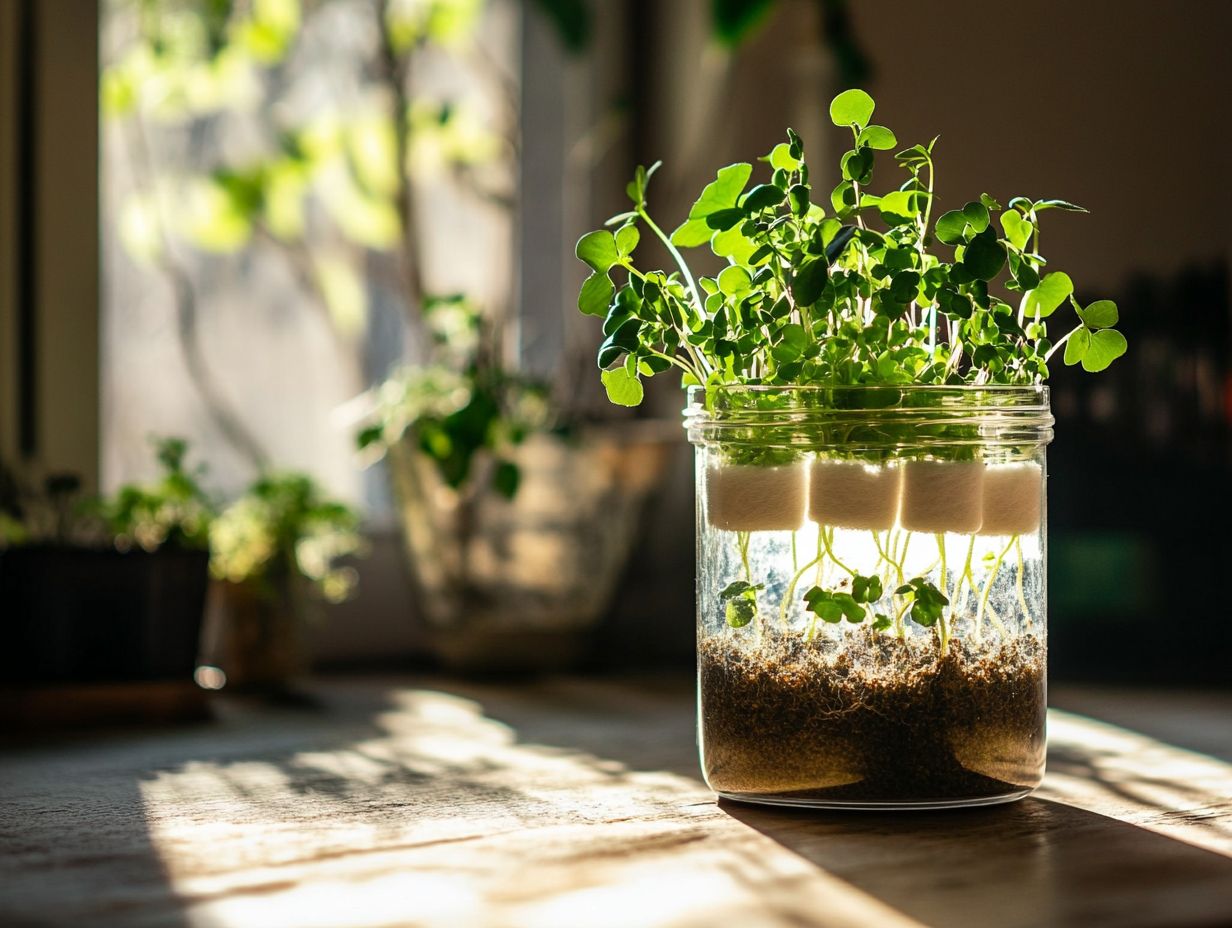
Establishing and nurturing your hydroponic garden is crucial. This helps your plants grow and stay healthy. Begin by choosing plants that grow well together think vibrant herbs like basil and rosemary or crisp leafy greens such as lettuce.
Once you’ve settled your plants in the right growing medium, it’s vital to provide a steady supply of nutrient solution. This ensures they receive the right amount of nutrients for robust growth. Regularly monitor water levels and nutrient concentration to sustain ideal conditions.
Choosing the Right Plants and Caring for Them
Choosing the right plants for your hydroponic garden is critical. Some species thrive in hydroponic systems better than others, delivering optimal yields and exquisite flavors. Popular options include herbs like mint, rosemary, and basil. Nutritious leafy greens such as lettuce and spinach also work well.
After making your selections, care for these plants diligently. Monitor their nutrient solution supply and adjust the growing medium as necessary. This promotes healthy plant development and robust growth.
Beyond these common choices, you can also grow fruits like strawberries and tomatoes in hydroponic setups. Just ensure you meet their specific light and temperature requirements. Understanding the unique growth needs like optimal pH levels, water temperature, and lighting conditions is vital for successful cultivation.
To maximize growth potential, research each plant’s ideal environment, including humidity levels and airflow. This ensures your hydroponic system mimics their natural habitat. Such a proactive approach enhances plant health and leads to higher yields and superior taste, making your hydroponic experience far more rewarding!
Troubleshooting Common Issues
Troubleshooting common issues in your Hydroponic Wick System is crucial for cultivating healthy, thriving plants. You may face challenges like nutrient deficiencies, poor root development, and inadequate water supply, which can hinder growth.
By identifying these problems early, you empower yourself to make timely adjustments to the nutrient solution and system operations. This ensures optimal growth and productivity for your green companions.
Identifying and Solving Problems with the System
Identifying and resolving issues with your Hydroponic Wick System is essential for nurturing a thriving garden. Timely intervention can prevent further complications. Common signs of trouble like yellowing leaves, stunted growth, and root rot may indicate deficiencies in your nutrient solution or improper wick placement.
To tackle these challenges, routinely monitor pH levels and nutrient concentrations to ensure they remain within the ideal ranges for your plants. Overly saturated or poorly aerated growing mediums can hinder the oxygen supply.
By incorporating regular maintenance like cleaning the system and replacing wicks when necessary you significantly reduce the risk of problems. This keeps your hydroponic system effective with low maintenance requirements.
By proactively addressing these warning signs, you set the stage for robust plant development and enhanced yields in your hydroponic setup.
Frequently Asked Questions
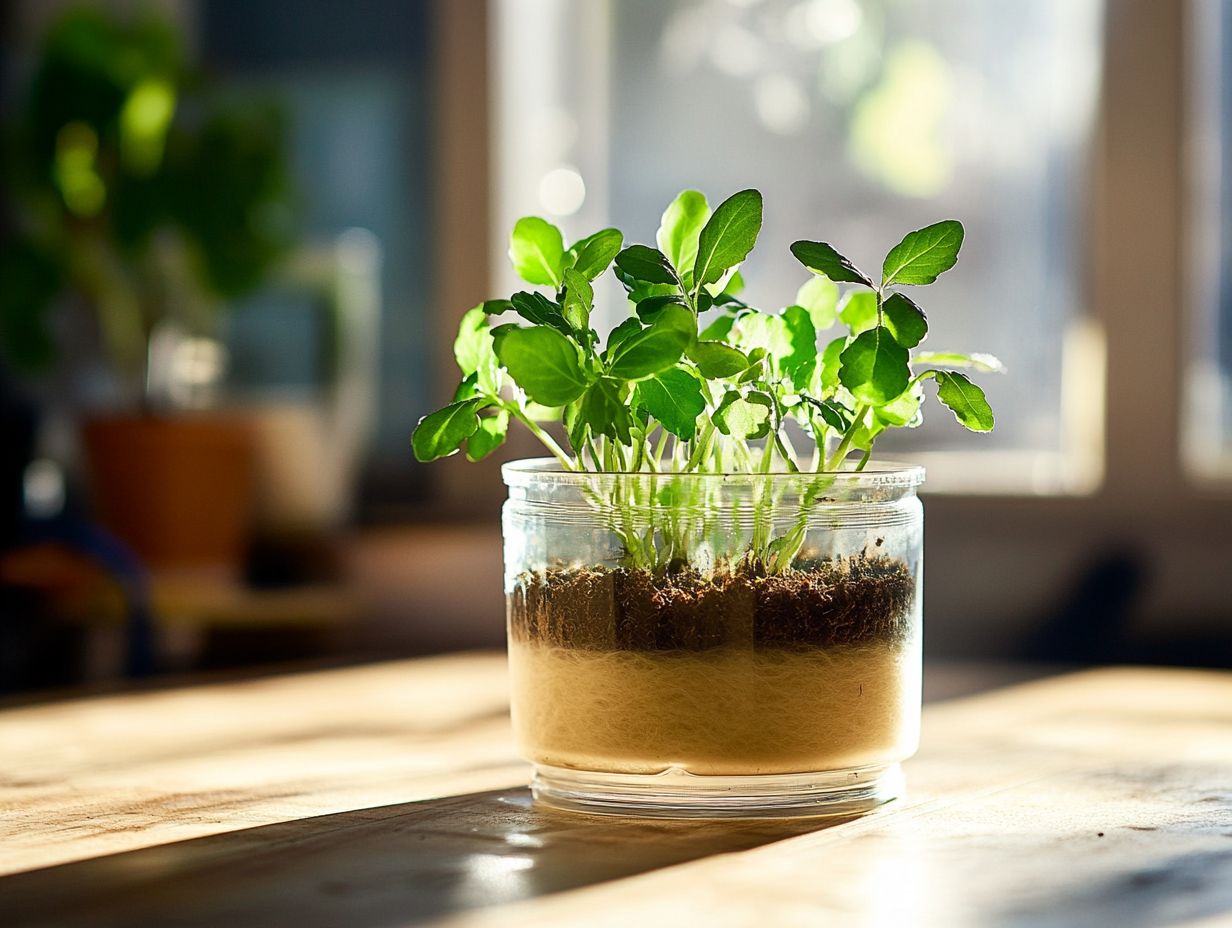
What materials do I need to make a hydroponic wick system?
Wondering what you need for a hydroponic wick system? Grab a container, wicks, a growing medium, nutrient solution, and your favorite plants!
How do I set up a hydroponic wick system?
Start by choosing a suitable container. Fill it with a growing medium, like clay pellets or rock wool.
Next, insert the wicks into the medium, ensuring they reach the bottom of the container. Then, add nutrient solution and make sure the wicks are fully saturated.
Finally, plant your favorite plants in the medium. Place the container in a well-lit area to help them thrive!
What type of plants can I grow in a hydroponic wick system?
You can grow a variety of plants in a hydroponic wick system. Leafy greens, herbs, and small vegetables thrive best.
This system works well for plants with small root systems that don t require a lot of water or nutrients.
How often do I need to water my plants in a hydroponic wick system?
Watering frequency depends on the plant type, container size, and temperature. Check the moisture level of the medium every 2-3 days.
Add more nutrient solution as needed to keep your plants healthy.
Can I use tap water for my hydroponic wick system?
Filtered or distilled water is recommended to avoid mineral and chemical build-up. If you use tap water, let it sit for 24 hours to allow chlorine to evaporate before adding it to the system.
How do I maintain my hydroponic wick system?
Regular maintenance includes checking the water level, pH level, and nutrient levels. Clean the container regularly and replace compacted growing medium.
Watch for signs of pests or diseases in your plants. Act quickly to address any issues.

